
Uses primary
- Subject:
- History
- Material Type:
- Lesson
- Provider:
- Connecticut Humanities
- Provider Set:
- Teach It
- Date Added:
- 02/09/2023

Uses primary

Biology is designed for multi-semester biology courses for science majors. It is grounded on an evolutionary basis and includes exciting features that highlight careers in the biological sciences and everyday applications of the concepts at hand. To meet the needs of today’s instructors and students, some content has been strategically condensed while maintaining the overall scope and coverage of traditional texts for this course. Instructors can customize the book, adapting it to the approach that works best in their classroom. Biology also includes an innovative art program that incorporates critical thinking and clicker questions to help students understand—and apply—key concepts.

By the end of this section, you will be able to:Compare innate and learned behaviorDiscuss how movement and migration behaviors are a result of natural selectionDiscuss the different ways members of a population communicate with each otherGive examples of how species use energy for mating displays and other courtship behaviorsDifferentiate between various mating systemsDescribe different ways that species learn

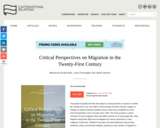
Thousands of people risk their lives daily by crossing borders in search of a better life. During 2015, over one million of these people arrived in Europe. Images of refugees in distress became headline news in what was considered to be the worst humanitarian crisis in Europe since 1945. This book provides a critical overview of recent migration flows and offers answers as to why people flee, what happens during their flight and investigates the various responses to mass migratory movements. Divided in two parts, the book addresses long-running academic, policy and domestic debates, drawing on case studies of migration in Europe, the Middle East and the Asia-Pacific. Coming from a variety of different fields, the contributors provide an interdisciplinary approach and open the discussion on the reasons why migration should be examined critically.
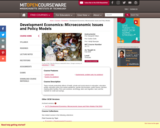
Topics include productivity effects of health, private and social returns to education, education quality, education policy and market equilibrium, gender discrimination, public finance, decision making within families, firms and contracts, technology, labor and migration, land, and the markets for credit and savings.
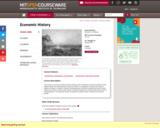
This course is a survey of world economic history, and it introduces economics students to the subject matter and methodology of economic history. It is designed to expand the range of empirical settings in students' research by drawing upon historical material and long-run data. Topics are chosen to show a wide variety of historical experience and illuminate the process of industrialization. The emphasis will be on questions related to labor markets and economic growth.
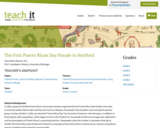
Uses primary sources to explore the impacts World War I had on the struggle for civil rights in Connecticut and America.

Students further their understanding of the salmon life cycle and the human structures and actions that aid in the migration of fish around hydroelectric dams by playing an animated PowerPoint game involving a fish that must climb a fish ladder to get over a dam. They first brainstorm their own ideas, and then learn about existing ways engineers have made dams "friendlier" to migrating fish, before being quizzed as part of the game.

Uses primary
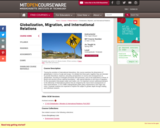
Tracing the evolution of international interactions, this course examines the dimensions of globalization in terms of scale and scope. It is divided into three parts; together they are intended to provide theoretical, empirical, and policy perspectives on source and consequences of globalization, focusing on emergent structures and processes, and on the implications of flows of goods and services across national boundaries -- with special attention to the issue of migration, on the assumption that people matter and matter a lot. An important concern addressed pertains to the dilemmas of international policies that are shaped by the macro-level consequences of micro-level behavior. 17.411 fulfills undergraduate public policy requirement in the major and minor. Graduate students are expected to explore the subject in greater depth through reading and individual research.
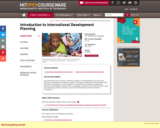
This introductory survey course is intended to develop an understanding of key issues and dilemmas of planning in non-Western countries. The issues covered by the course include state intervention, governance, law and institutions in development, privatization, participatory planning, decentralization, poverty, urban-rural linkages, corruption and civil service reform, trade and outsourcing and labor standards, post-conflict development and the role of aid in development.

Uses primary
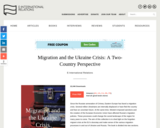
Since the Russian annexation of Crimea in 2014 and the beginning of the war in Donbas, Eastern Europe has been facing a migration crisis. Several million Ukrainians are internally displaced or have fled the country and now face an uncertain future. At the same time, Western-imposed sanctions and the creation of the Eurasian Economic Union have affected Russia’s migration policies. These largely ignored processes have a potential to change the social landscape of the region for many years to come. The aim of this collection is to shed light on the forgotten migrant crisis at the European Union’s doorstep and make sense of the various migration processes in and out of Ukraine and Russia. The book is divided into two sections. The first section deals with migration processes that have taken place within Ukraine or have involved Ukrainian citizens’ migration out of the country, excluding Russia. The second section discusses Russia’s response to the rapid inflow of migrants from Ukraine, its changing migration policies and their effect on migrants, as well as other processes related to the phenomenon over the course of the Ukraine crisis.
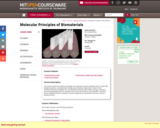
This course covers the analysis and design at a molecular scale of materials used in contact with biological systems, including biotechnology and biomedical engineering. Topics include molecular interactions between bio- and synthetic molecules and surfaces; design, synthesis, and processing approaches for materials that control cell functions; and application of state-of-the-art materials science to problems in tissue engineering, drug delivery, vaccines, and cell-guiding surfaces.
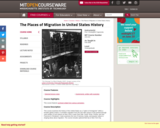
Examines the history of the United States as a "nation of immigrants" within a broader global context. Considers migration from the mid-19th century to the present through case studies of such places as New York's Lower East Side, South Texas, Florida, and San Francisco's Chinatown. Examines the role of memory, media, and popular culture in shaping ideas about migration. Includes optional field trip to New York City.
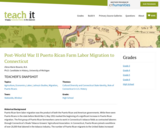
Uses primary sources to explore the impacts World War I had on the struggle for civil rights in Connecticut and America.
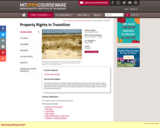
Examines alternative economic, political, and social perspectives of property rights and their policy and planning implications. Focuses on institutional and governance structures, power and control mechanisms, distributional consequences of different property rights arrangements, and problems of incomplete contracts as presented in theory and practice. Deals with property-rights issues related to two or more of the following: land, natural resources, infrastructure, or industrial organization.
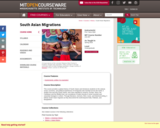
This course provides a global history of South Asians and introduces students to the cultural, social, economic, and political experiences of immigrants who traveled across the world. It studies how and why South Asians, who have migrated to America, Europe, Africa, the Caribbean and the Middle East, are considered a model minority in some countries and unwanted strangers in others. Through literature, memoirs, films, music, and historical writing, it follows South Asian migrants as they discovered the world beyond India, Pakistan, and Bangladesh.